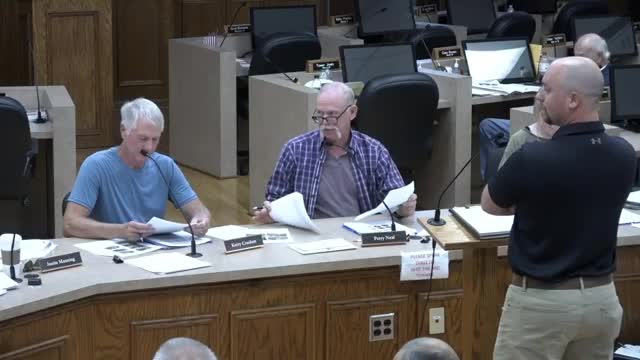Zoning Board Approves Controversial Explosives Operation Expansion
August 16, 2024 | Wilson County, Tennessee
This article was created by AI summarizing key points discussed. AI makes mistakes, so for full details and context, please refer to the video of the full meeting. Please report any errors so we can fix them. Report an error »

In a recent government meeting, discussions centered around zoning regulations and variances for various properties, highlighting the complexities of local land use laws.
One significant topic involved a request from Dinah Nobel for formalized use approval of an explosives operation that has been in place since 1972. The operation is currently classified as a non-conforming use under state law, allowing it to continue despite zoning changes. The board acknowledged the grandfathered status of the business, which has undergone multiple ownership changes over the years. The representatives emphasized their intent to ensure compliance with zoning regulations while expanding their operations, which include the use of explosives for contracted blasting services.
The board also addressed a variance request from Rick Miller for a garage addition at his property on Vanderbilt Road. Miller sought a five-foot reduction from the required 15-foot side setback, which was granted due to the property's historical context and the staff's recommendation.
Another case involved Ashley Dove, who requested an additional variance for a proposed carport on her corner lot. The board discussed the unique challenges of corner lots, which are subject to stricter setback requirements. Despite staff's initial recommendation against the variance, the board ultimately approved the request, considering the lack of opposition from neighbors and the practical implications of the design.
Lastly, Cellcat Title Holdings sought a variance for a Southeastern Line Construction Apprenticeship and Training School, requesting to exceed the height limit for buildings in an R2 zoning district. The board expressed support for the educational use and the necessity for a taller structure to facilitate training, ultimately approving both the use and the height variance.
These discussions reflect ongoing efforts to navigate local zoning laws while accommodating the needs of businesses and residents in the community. The board's decisions underscore the importance of balancing regulatory compliance with practical land use considerations.
One significant topic involved a request from Dinah Nobel for formalized use approval of an explosives operation that has been in place since 1972. The operation is currently classified as a non-conforming use under state law, allowing it to continue despite zoning changes. The board acknowledged the grandfathered status of the business, which has undergone multiple ownership changes over the years. The representatives emphasized their intent to ensure compliance with zoning regulations while expanding their operations, which include the use of explosives for contracted blasting services.
The board also addressed a variance request from Rick Miller for a garage addition at his property on Vanderbilt Road. Miller sought a five-foot reduction from the required 15-foot side setback, which was granted due to the property's historical context and the staff's recommendation.
Another case involved Ashley Dove, who requested an additional variance for a proposed carport on her corner lot. The board discussed the unique challenges of corner lots, which are subject to stricter setback requirements. Despite staff's initial recommendation against the variance, the board ultimately approved the request, considering the lack of opposition from neighbors and the practical implications of the design.
Lastly, Cellcat Title Holdings sought a variance for a Southeastern Line Construction Apprenticeship and Training School, requesting to exceed the height limit for buildings in an R2 zoning district. The board expressed support for the educational use and the necessity for a taller structure to facilitate training, ultimately approving both the use and the height variance.
These discussions reflect ongoing efforts to navigate local zoning laws while accommodating the needs of businesses and residents in the community. The board's decisions underscore the importance of balancing regulatory compliance with practical land use considerations.
View full meeting
This article is based on a recent meeting—watch the full video and explore the complete transcript for deeper insights into the discussion.
View full meeting
